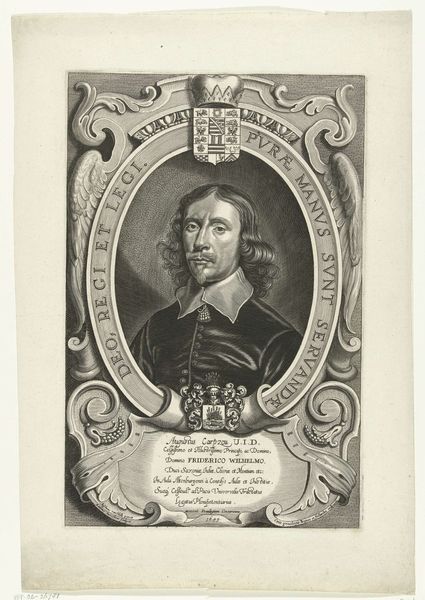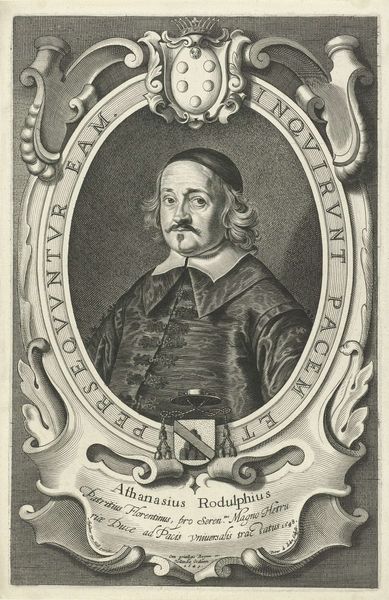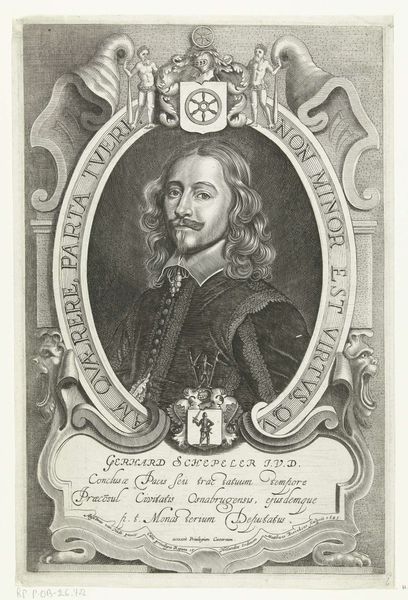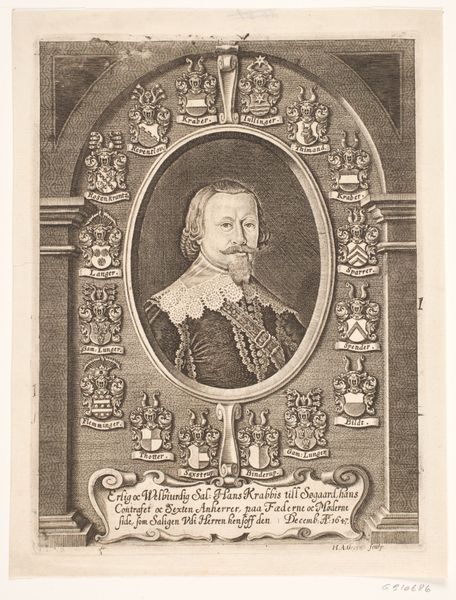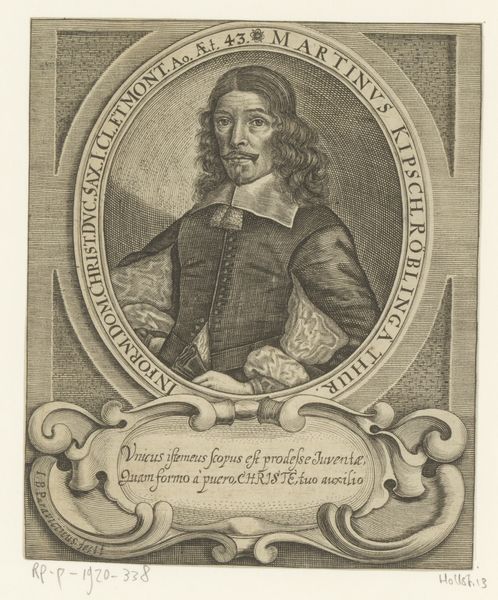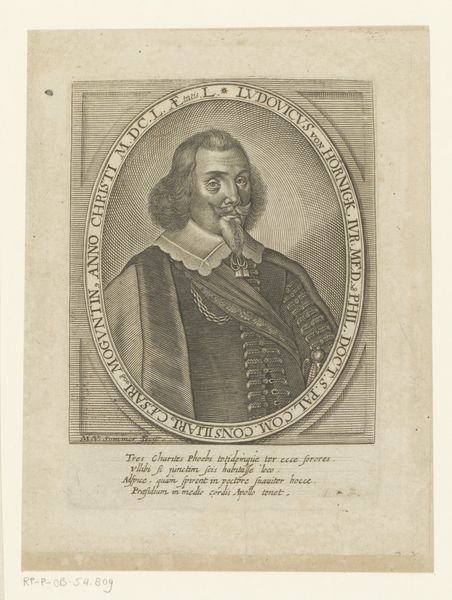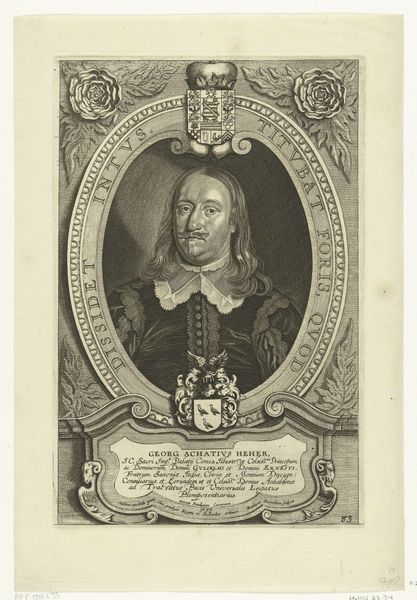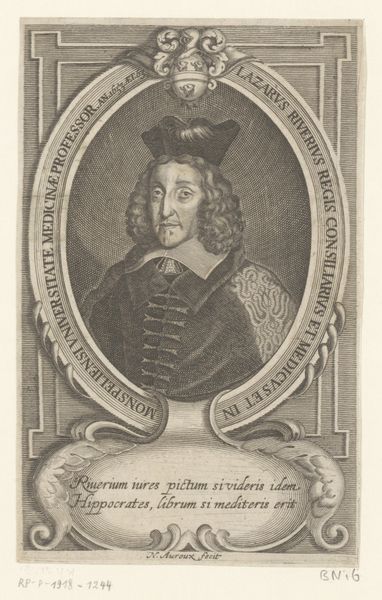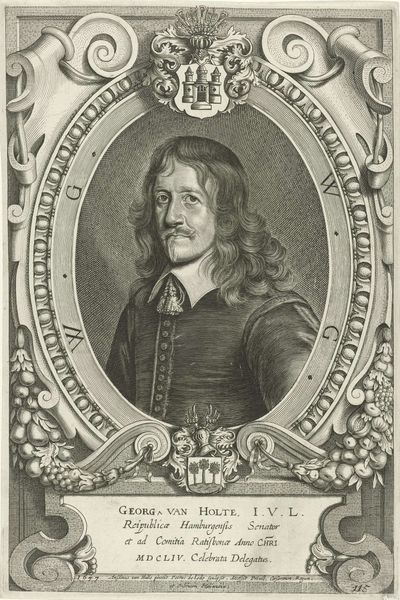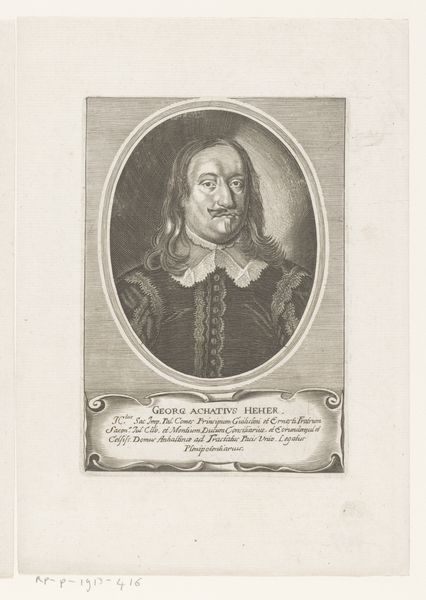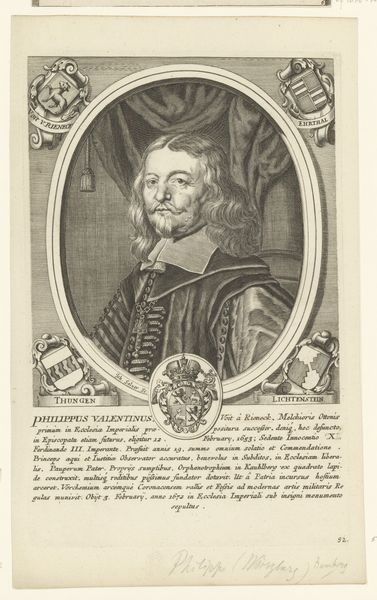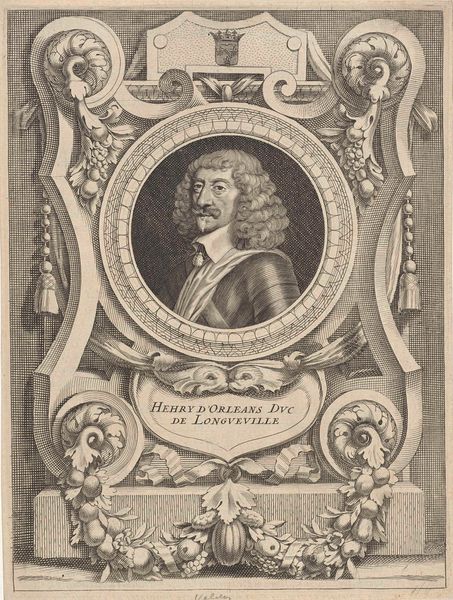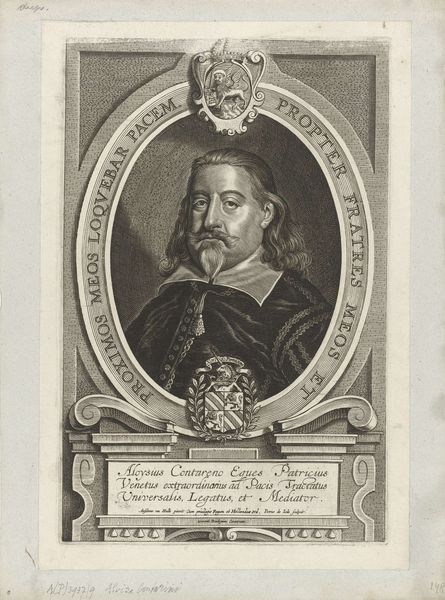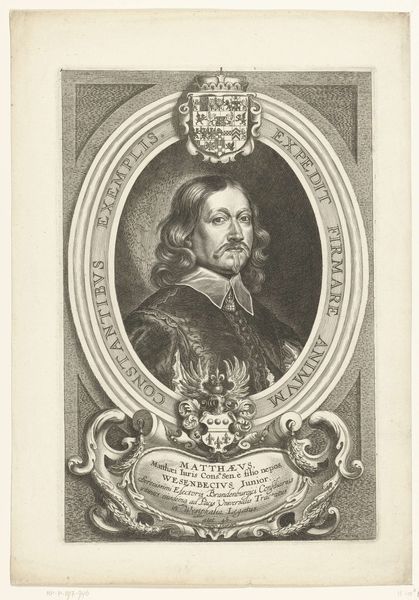
print, engraving
#
portrait
#
baroque
# print
#
old engraving style
#
caricature
#
framed image
#
history-painting
#
engraving
Dimensions: height 300 mm, width 198 mm
Copyright: Rijks Museum: Open Domain
Editor: So, here we have Mattheus Borrekens' "Portret van Johannes Timmerscheidt," an engraving from 1649. It's got this incredibly ornate frame, and Timmerscheidt himself looks so serious, almost imposing. How do you interpret this work? Curator: I see it as a powerful assertion of status and the socio-political landscape of the 17th century. These portraits weren't merely about likeness; they were about constructing identity within a very rigid hierarchy. Look at the Latin inscription – it's a message intended for a specific, educated audience. Who was this message for, and what statement was being made about Timmerscheidt’s position within that power structure? Editor: Right, it's not just a picture, it’s a carefully crafted image. What can you tell me about this context of power? Curator: Well, think about the Baroque period – this was a time of intense political and religious conflict. The visual language of portraiture became a way for individuals to solidify their position. Timmerscheidt’s clothing, the heraldic symbols, the very act of commissioning such a piece, all speak to a desire for lasting influence within his community. Who got to be portrayed? What did these symbols signify at the time? We must challenge this almost 'divine right' of powerful figures from history, no? Editor: It’s interesting to consider how he’s using this portrait to present a carefully curated version of himself. Do you think that portraiture from the Baroque Era can still convey power in contemporary society? Curator: Absolutely. Consider the ways politicians and CEOs utilize portraiture today— carefully staged photoshoots, the controlled release of information—these practices mirror the same concerns of image-making we see here. These continuities show us how the mechanics of power and representation persist. What we see and choose to highlight really matter in an unequal society. Editor: This has shifted how I will analyze historical paintings now, viewing them through social issues makes them more captivating and important. Curator: Exactly, and that is how we create the context for them.
Comments
No comments
Be the first to comment and join the conversation on the ultimate creative platform.
